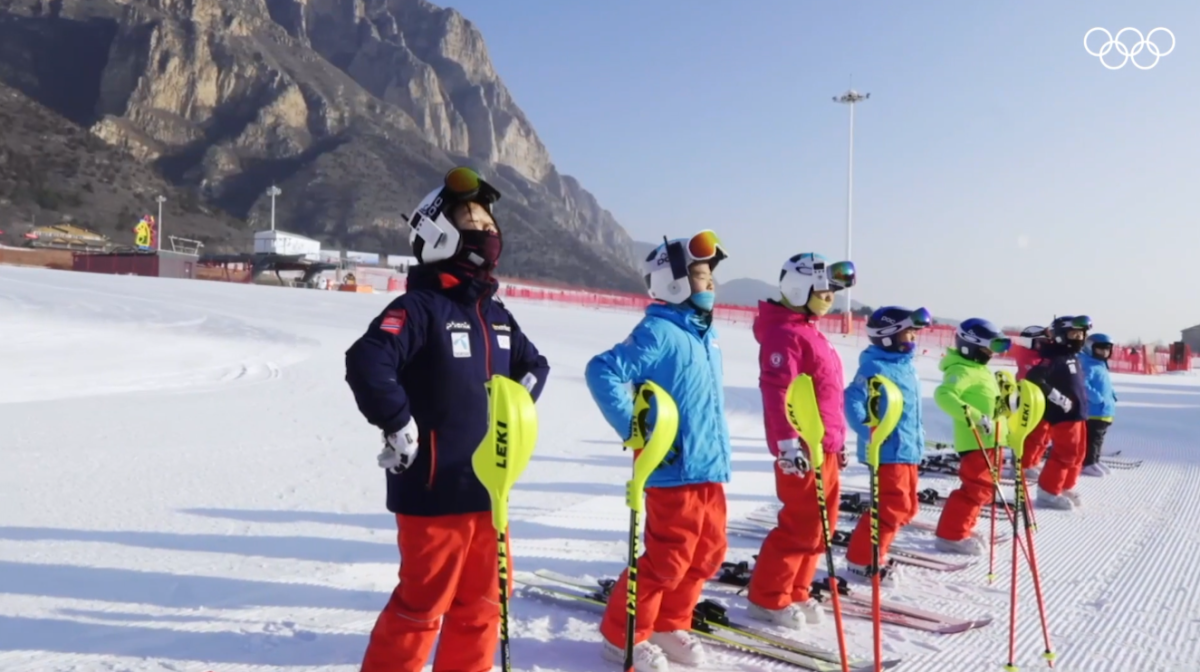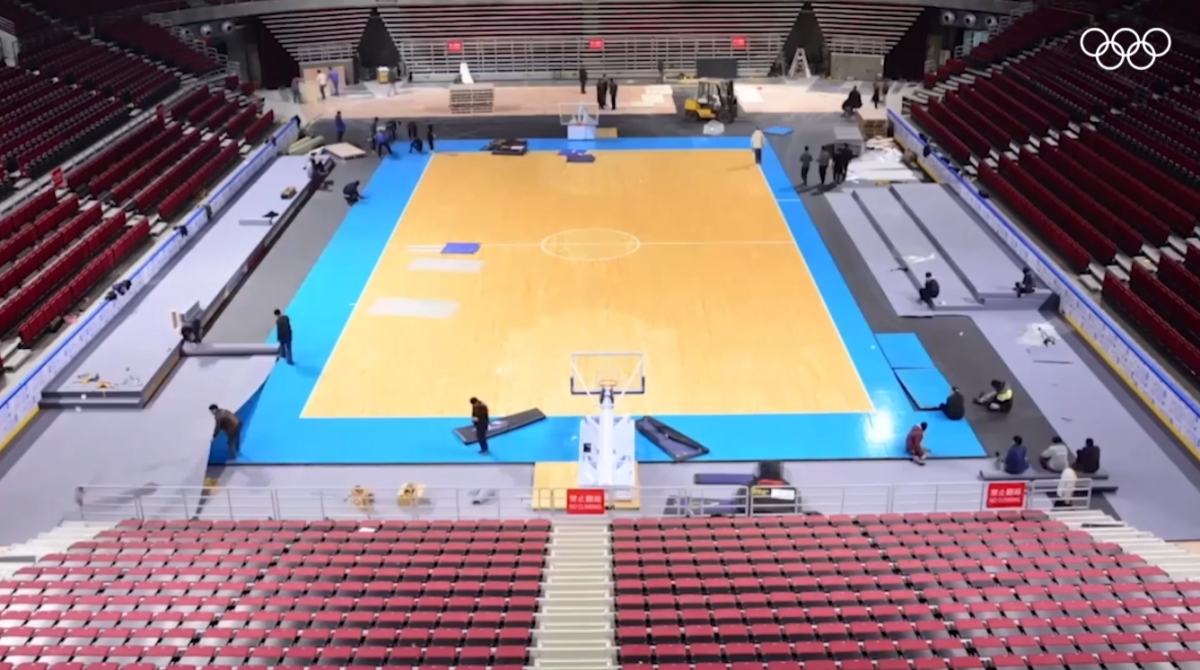Beijing 2022: A Year On, Chinese People Enjoy Winter Sports, Reaping Social and Economic Benefits Created by the Olympic Winter Games
International Olympic Committee
One year after the Games, all the Beijing 2022 venues are being enjoyed by the public and local athletes, and the winter sports industry in the country is booming. Driven by Olympic Agenda 2020 and Olympic Agenda 2020+5, the Games have engaged 346 million Chinese in winter sports since 2015, and created lasting, wide-ranging social and economic benefits for local people.
The first city ever to hold both the Summer and Winter Games, Beijing delivered spectacular Olympic Winter Games last year, while managing to engage almost 350 million people across China in winter sports.
The Opening Ceremony held at the Bird’s Nest, a legacy venue from Beijing 2008, kicked off nationwide excitement for winter sports. From teen prodigies to seasoned competitors, nearly 3,000 athletes from 91 National Olympic Committees helped jumpstart China’s newly emerging winter sports scene. With nine golds and a total of 15 medals, Beijing 2022 saw China’s best Winter Olympic performance to date.
An online sensation
The winter sports fever was felt far beyond China, however. Within the context of the COVID-19 pandemic, many people could only watch the Games thanks to cutting edge technology and digital innovation. Having reached a global audience of more than two billion people, the Games quickly became an online sensation. A total of 2.01 billion unique viewers tuned in to watch coverage from Beijing across linear TV and digital platforms, a five per cent increase on the audience for the Olympic Winter Games PyeongChang 2018.
OLYMPIC WINTER GAMES BEIJING 2022
- By June 2022, the number of winter sports instructors had reached 29,000 in Beijing
- 346 million people have engaged in winter sports across China since 2015
- 5,000 schools across China are expected to include winter sports in their curriculum by the end of 2025
- By 2021, the number of ice rinks in China had increased by 317% compared with 2015
- 520 million visitors are expected in China during the 2024-2025 season
Olympic legacies created before the Games
The aim to establish China as a snow and ice destination had already been achieved before the Games began. By the beginning of 2021, the country had already built 654 standard ice rinks, up by 317 per cent compared with 2015; and 803 indoor and outdoor ski resorts, up by 41 per cent from 2015 levels.
By one year after the Games, as many as 346 million people have taken part in winter sports since 2015. According to the China Tourism Academy, during the 2024-2025 ice and snow season, China’s winter leisure tourism sector is expected to have welcomed more than 520 million visitors and earned revenue of more than CNY 720 billion (approx. USD 107 billion).
The mushrooming growth of this sector has had knock-on benefits for health and leisure, society and the broader economy. For example, for those living in areas surrounding the venues, the Games have created some 81,000 new job opportunities.
“Beyond staging spectacular Games, Beijing 2022 was laser focused on delivering lasting social and economic benefits for its residents – in line with Olympic Agenda 2020+5,” said Christophe Dubi, Olympic Games Executive Director. “One year on, the most outstanding feature of these Games is the way they touched the lives of millions of local people by making them discover the world of winter sports. The organisers also made sure the Games minimised their impact on the environment by prioritising the use of existing venues, using renewable energy to power all the venues, and implementing innovative technology, such the CO2 refrigeration systems that will help make winter sports more sustainable.”
Sustainable venues
Aiming to reduce the environmental impact of the Games, Beijing 2022 re-used five competition venues from the Olympic Games 2008 while embracing new construction standards for those venues that were newly constructed for Beijing 2022 – from water and energy efficiency to building insulation and cooling technologies. A core driver for this was the IOC’s Olympic Agenda 2020, which requires host cities to minimise new construction to reduce emissions, and ensure long-lasting use of any new venues.
One year on, Chinese residents can already visit, use and enjoy the Beijing 2022 Olympic venues.
The National Aquatics Centre, known as the “Water Cube”, which hosted Olympic swimming, diving and artistic swimming at the Olympic Games in 2008, was turned into an “Ice Cube” to host the Beijing 2022 curling competitions. The venue has seen massive public interest, with more than 3,000 visitors on day one of its opening, earning it the nickname of “the hottest ice” in Beijing.
In Shougang Park, which has recently been reopened, visitors can jump onto a large inner tube to slide down the lanes of the Big Air Shougang. The iconic venue converted from a former steel mill is now used as both a sports facility and a vibrant culture hub.
A short train ride away, Yanqing, one of the three Olympic zones, hosted alpine skiing, bobsleigh, skeleton and luge competitions at the Games. It now invites amateurs to follow a three-kilometre ski trail that runs through a forest and over a bridge, offering scenic views of Haituo Mountain. More experienced skiers can enjoy the slopes of the National Alpine Skiing Centre.
The Genting Snow Park, where 20 gold medals were up for grabs during the Games, is already one of the busiest Beijing 2022 venues this winter season. Some 30 events, including professional and amateur competitions, junior training programmes and skiing festivals, have been scheduled at the resort so far.
Beijing is committed to making increased use of all its venues, encouraging their multiple, year-round use and upgrading facilities to expand capacity and improve their quality. Rebuilding old factory workshops, warehouses and commercial facilities into indoor winter sports venues has also been recommended by the local authorities.





